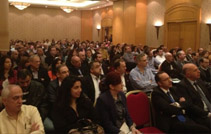|
Social Activities
Gala Dinner: Eau de vie Phoenicia hotel |
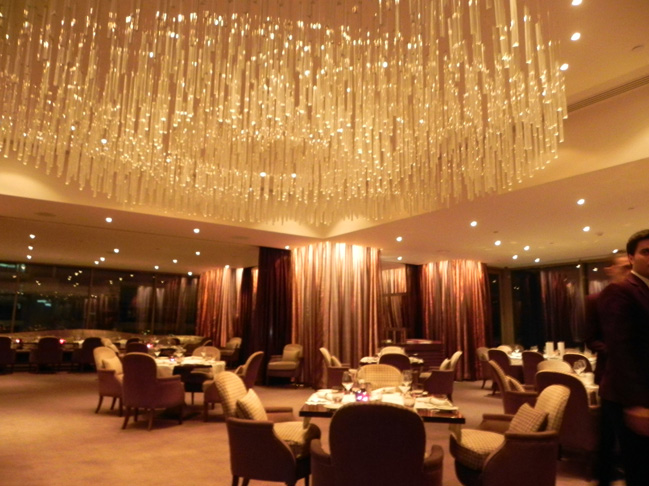
|
One of the trendiest and most exquisite modern French restaurants in the region, Eau de Vie is situated at the top of the Phoenician tower combining quintessential elegance with magnificent panoramic views over the Mediterranean.
Its extensive wine list has been granted the “Award of Excellence” by the Wine Spectator magazine for four consecutive years and the restaurant offers a nightly entertainment for guests’ enjoyment.
For Reservation Click here
|
|
|
|
|
|
|
| Touristic Places |
| Anjar, Bekaa |
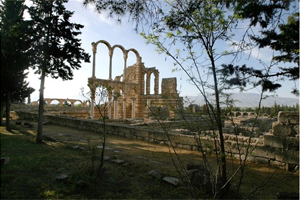 |
Anjar, also known as Haoush Mousa, is a town of Lebanon located in the Bekaa Valley. The population is 2,400, consisting almost entirely of Armenians. The total area is about twenty square kilometers (7.7 square miles). In the summer, the population swells to 3,500, as members of the Armenian diaspora return to visit there. |
| Baalbek, Bekaa Valley |
 |
Baalbek, also known as Baalbeck,is a town in the Beqaa Valley of Lebanonsituated east of the Litani River. It is famous for its exquisitely detailed yet monumentally scaled temple ruins of the Roman period, when Baalbek, then known as Heliopolis, was one of the largest sanctuaries in the empire. It is Lebanon's greatest Roman treasure, and it can be counted among the wonders of the ancient world, containing some of the largest and best preserved Roman ruins. |
| Beirut, Downtown |
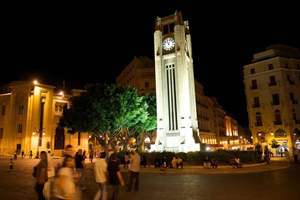 |
Beirut, is the capital and largest city of Lebanon. As there has been no recent population census, the exact population is unknown; estimates in 2007 ranged from slightly less than 1 million to slightly more than 2 million. Located on a peninsula at the midpoint of Lebanon's Mediterranean coast, it serves as the country's largest and main seaport. The Beirut metropolitan area consists of the city and its suburbs. The first mention of this metropolis is found in the ancient Egyptian Tell el Amarna letters, dating from the 15th century BC. The city has been inhabited continuously since then. |
| Beiteddine - Moussa Castle , Chouf |
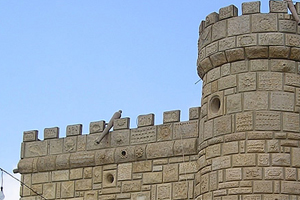 |
Faith in God, satisfaction of parents. That is what characterized the personality of Moussa, the man who built a castle on a hill between Deir El Kamar and Beiteddine, and engraved on its stones his ideas and beliefs.
His dream was born when he was only 14 years old when Lebanese girl used to say that she wants to marry a guy who owns a palace.Inspired by the Middle Ages that had conquered his mind, he dreamt of building a great castle with his own hands, turning sand into gold and handcrafted each of its stones and clay animated figures representing different scenes of the old Lebanese village life, making it a true work of a visionary and a masterpiece by all means
|
| Byblos, Mount Lebanon |
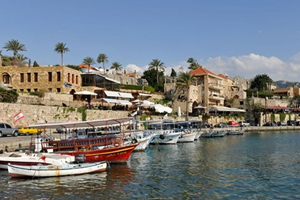 |
Byblos is the Greek name of the Phoenician city Gebal.It is a Mediterranean city in the Mount Lebanon Governorate of present-day Lebanon under the current Arabic name of Jubayl and was also referred to as Gibelet during the Crusades. It is believed to have been occupied first between 8800 and 7000 BC,and according to fragments attributed to the semi-legendary pre-Trojan war Phoenician historianSanchuniathon, it was built by Cronus as the first city in Phoenicia.Today it is believed by many to be the oldest continuously-inhabited city in the world. |
| Harissa, Mount Lebanon |
 |
Harissa Hill is situated at a distance of 25 kilometers from Beirut, and at a 600m altitude in the heart of Kesrwan. On the top of the hillside lays an immense immaculate statue of Virgin Mary overlooks the bay of Jounieh offering a panoramic view at the top of the statue. A cable car links the coast to the Belvedere. |
| Jeita Grotto, Mount Lebanon |
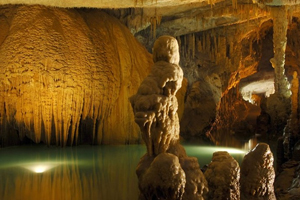 |
The Jeita Grotto is a system of two separate, but interconnected, karstic limestone caves spanning an overall length of nearly 9 kilometres (5.6 mi). The caves are situated in the Nahr al-Kalb valley within the locality of Jeita, 18 kilometres (11 mi) north of the Lebanese capital Beirut. Though inhabited in prehistoric times, the lower cave was not rediscovered until 1836 by Reverend William Thomson; it can only be visited by boat since it channels anunderground river that provides fresh drinking water to more than a million Lebanese. |
| |
For Reservation Click here |
|













